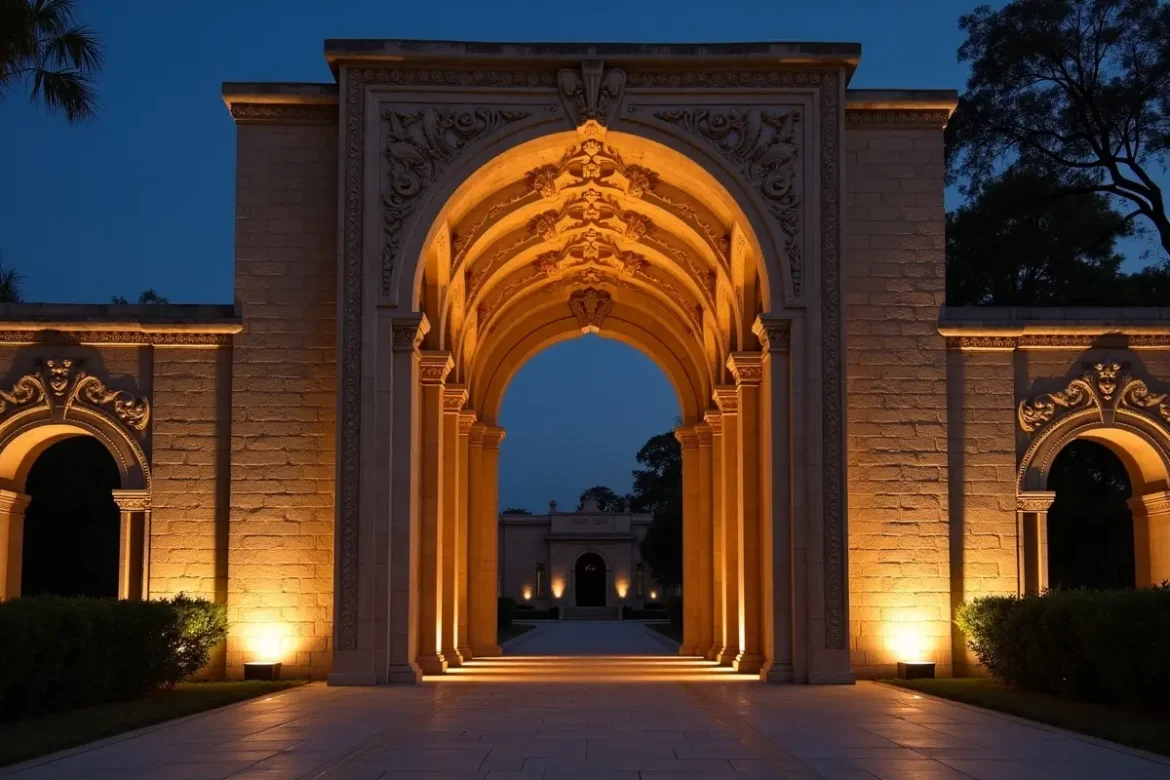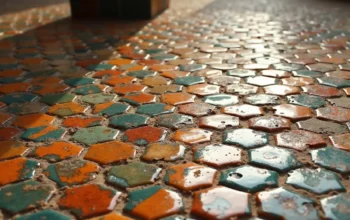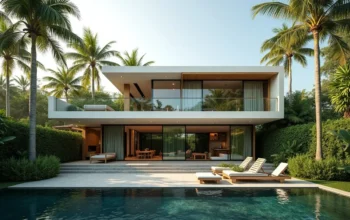
Want your home’s best features to actually stand out?
Accent lighting is the powerful tool interior designers use to take spaces from ordinary to extraordinary.
Nice crown molding? Exposed brick walls? Architectural columns?
The right lighting can make all of these features shine.
But here’s the problem…
Most people install the same boring overhead lights throughout their home and wonder why it all looks flat and lifeless.
The good news?
With a few easy accent lighting tricks, it’s possible to highlight architectural features, create visual interest, and make guests say “wow” every time they walk into a home.
So let’s get started…
In this ultimate guide to accent lighting architectural features, you’ll learn…
- Accent Lighting Basics
- Why Architectural Features Require Accent Lighting
- Popular Lighting Styles for Accentuating Features
- The Best Accent Lighting Techniques That Work
- Mistakes to Avoid with Accent Lighting
Contents
Accent Lighting Basics
Accent lighting is a type of lighting specifically designed to draw attention to particular features in your space.
It’s different from ambient lighting (which provides overall illumination) or task lighting (which helps you perform specific tasks).
Accent lighting is designed to create drama and visual interest.
It’s used to make specific features stand out by creating contrast.
That’s because when light shines on a certain object or feature, it automatically becomes a focal point because it’s brighter than everything else around it.
Accent lights are usually 3x brighter than the ambient lighting in the rest of the room.
Homeowners are increasingly prioritizing aesthetics and using lighting to add visual interest and highlight architectural features and create focal points.
Different states have their own preferences when it comes to which lighting styles they prefer in their spaces. In fact, some of the favourite lighting styles by state can reveal just how varied popular lighting styles can become all across the country. From a modern minimalist style to traditional ornate fixtures.
Think of accent lighting like a spotlight in a theater. It directs eyes to where they should look.
Why Architectural Features Need Accent Lighting
You may not realize it, but…
Architectural features are invisible in the dark.
Those beautiful details paid for don’t have any impact if people can’t see them.
Some common architectural features that often need special lighting include…
- Crown molding and decorative trim
- Textured walls or stonework
- Built-in shelving and alcoves
- Columns and archways
- Vaulted ceilings and beams
Architectural features add character and value to your home.
But they only have an impact if they’re properly highlighted.
In fact, poor lighting can make architectural features look worse.
Flat overhead lighting casts harsh shadows that hide details rather than reveal them.
Accent lighting can make all the difference.
By carefully placing lights at specific angles, you can emphasize textures, create depth, and make architectural elements “pop.”
Homeowners understand the power of targeted illumination for accent and ambient lighting effects. That’s why the sconce segment accounting for a massive 34.7% market share in decorative lighting.
Best Accent Lighting Techniques That Work
Ready to show off your home’s best features?
These are the most effective accent lighting techniques used by the pros.
Uplighting
Uplighting is a technique that places lights at the base of a feature and points them upward.
Works really well for highlighting tall features like columns or textured walls.
Emphasizes vaulted ceilings too. The upward angle creates interesting shadows and makes rooms look taller.
Can get a little “movie theater” if you overdo it though.
Downlighting
Downlighting is the opposite of uplighting. You place lights above a feature and direct the light downward.
Works great for artwork, architectural details on walls, or creating pools of light on specific areas.
Popular downlighting fixtures include recessed ceiling lights and track lighting.
Tip: Narrower beam angles create a more dramatic effect on small features. Wider beam angles are better for larger surfaces.
Wall Washing
Wall washing uses a broad beam of light to evenly illuminate an entire wall surface.
Great for textured walls, brick, stone, or any surface where the material itself should be on display.
The even distribution of light reveals all the details without casting harsh shadows.
The light should be about 2-3 feet away from the wall and installed at the top for the best wash effect.
Grazing
Grazing is similar to wall washing, but the light is placed much closer to the surface.
Creates dramatic shadows that emphasize texture.
Perfect for stone walls, wood paneling, or any highly textured surface where creating a lot of visual interest is the goal.
Spotlighting
Spotlighting uses narrow, focused beams of light to highlight specific objects or features.
It’s like putting a spotlight on a piece of artwork or a sculptural element.
Track lighting and adjustable recessed lights work great for this.
Spotlight should be roughly 3x brighter than the rest of the ambient light in the room for best effect.
Choosing The Right Fixtures For Accent Lighting
Not all light fixtures are created equal when it comes to accent lighting.
Track lighting is super flexible because you can position and aim each individual light on the track. Makes it great for highlighting multiple features with one fixture.
Adjustable recessed lights (aka eyeball or gimbal lights) sit flush with the ceiling but allow the beam to be directed where needed.
Offers a clean modern look while giving control of accent lighting.
Wall sconces are ideal for accent lighting on walls, alcoves, and architectural details at eye level. Sconce market dominates because these types of fixtures are great for creating ambient and accent effects.
LED strip lights are the secret weapon for highlighting shelving, crown molding, and architectural details.
Energy-efficient, easy to install, and can be hidden so that only the light effect is visible.
Indoor lighting represents over 76% of the architectural lighting market because homeowners know that interior features deserve special attention.
Mistakes To Avoid
There are lots of ways to mess up accent lighting even with the right fixtures.
Over-Lighting
Accent lighting should be used sparingly.
If you highlight everything it ends up calling attention to nothing.
Choose your most important features and focus on those.
Leave some areas in shadow to create contrast.
Wrong Color Temperature
Color temperature matters more than most people realize.
Warm white (2700K-3000K) works best for most residential applications.
Cool white light can make spaces feel sterile and unwelcoming.
Ignoring Glare
Glare completely ruins the effect of accent lighting and makes spaces uncomfortable.
Always shield your light sources from direct view. Use baffles, louvers, or position fixtures so that the bulb isn’t visible from normal viewing angles.
Beam Angle
Beam angle determines how wide your light spreads.
Narrow beams (15-30 degrees) are great for dramatic highlights on small features.
Wide beams (40-60 degrees) work better for larger surfaces.
Using the wrong angle will waste light and reduce impact.
Getting Started With Accent Lighting
Ready to upgrade a space?
Don’t try to re-light an entire home in one weekend.
Pick one architectural feature to highlight.
Install appropriate accent lighting for that feature using the techniques above.
See how it looks before moving on to another feature.
That way it’s possible to learn what works and what doesn’t in a space without over-investing upfront.
More accent lighting can always be added later.
Tip: Good accent lighting should never call attention to itself. It should make architectural features the star of the show.
Conclusion
Accent lighting is the secret weapon for making ordinary spaces feel extraordinary.
By understanding which lighting techniques work best for different architectural features, it’s possible to create depth, interest, and visual drama that makes a home’s architecture really shine.
- Use uplighting for tall features and textured walls.
- Try downlighting for artwork and architectural details on walls.
- Wall washing is great for even illumination of textured surfaces.
- Grazing for dramatic texture emphasis.
- Spotlighting for specific focal points.
Start with one feature and build from there. Once the process is understood, accent lighting can be added throughout a home.
With the right accent lighting strategy, all of a home’s architectural features will pop.
They’re already there… You just need to light them up.



